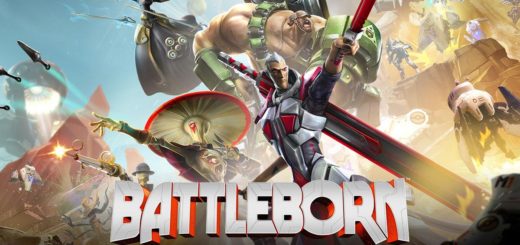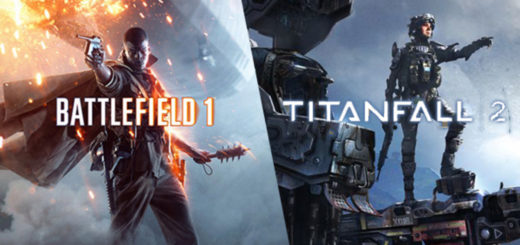SOMA Review
I kicked myself as I downloaded SOMA, Frictional Games’ newest title. This is from the guys that made AMNESIA: THE DARK DESCENT, the game I was too afraid to play in high school and that everyone and their mom thinks is the scariest game in existence. I can hold my bladder watching a horror movie, but the interactive nature of survival-horror fills my trousers like nothing else. Hell, even SOMA’s menu theme had me calling for a timeout.
SOMA’s premise is just about as intriguing as they come. You play as Simon, a regular schmuck that happened to bonk his head and needed his brain scanned as a result. Instead of waking up in the hospital, however, you find yourself in a blood-covered laboratory. That is under the ocean. One hundred years in the future. Oh yeah, and a comet wiped out all human life on Earth and “you” are only a copy of Simon’s scan inhabiting the corpse of a deep-sea diver.
But please, make yourself at home
It gets better, though. You quickly meet “Catherine”, a similarly scanned scientist inhabiting a robot. Catherine tells you that the scans of everyone that worked in the lab have been uploaded onto a device called the ARK, where they live in a MATRIX-esque virtual world in order to carry on the human legacy for millennia. All you have to do to activate the ARK is make your way across the vast complex to where it’s stored, load the device into a railgun, and launch the sucker into space. Of course, doing so involves navigating around the malfunctioning robots, mutated sea creatures, and mangled corpses reanimated by the WAU, the facility’s haywire AI.
It’s hard to know what’s scarier: the underwater zombie or his shriveled sea penis
The story here is one of the most captivating sci-fi narratives I’ve ever experienced. As Simon grapples with his new situation, he’s forced to ask himself some tough questions. Who is the real Simon? The body or the mind? What defines ‘humanity’? And at what point do people cease to be human? There’s fifty shades of GHOST IN THE SHELL and BLADE RUNNER being tossed around each minute of SOMA, and it constantly prompts the player to re-evaluate their own views on identity.
Carl identifies as robofluid
Gameplay-wise, SOMA functions nearly identically to AMNESIA. Simon is slow and weak, no match for the spooky-scaries patrolling the complex. He must hide if he doesn’t want to end up as a shawl for the lucky monster who snags him. The catch is that Simon’s visual feed will glitch whenever he gets near one, and he can’t look at them for too long without losing his vision completely.
Because players aren’t allowed to look at enemies, sound becomes extremely important, and serves as a more reliable means of determining enemies’ presence. SOMA’s audio design is spot on, with every muffled clattering and thundering of footsteps causing me to jump in my seat. Lighting is also utilized effectively, as monsters will seamlessly melt in and out of shadows to spook your pants off. Frictional proves again that they are the masters of atmosphere, and I was filled with dread upon entering each new environment.
There’s also beautiful underwater segments to shake things up
That being said, SOMA isn’t a terribly scary game. The WAU’s creatures, though horrific in design, are pushovers as actual opponents. Hiding from them is fairly easy, and Simon can easily outrun most of them if he is spotted. In addition, SOMA lacks any kind of resource management. Saving flashlight batteries and health items aren’t an issue. Instead, we get limitless light and plentiful health regeneration points. Any tension that built up during the lead up to a monster encounter would evaporate instantly as I ran right past them. I only died once in SOMA, and it was because I fell from a ladder.
WAU is right
At least puzzles are frequent and fun, and they give the player respite from the heavy tension that permeates throughout. Environments are extremely interactive, and Simon will be rooting through hundreds of drawers, lockers, and computer files throughout SOMA. It allows for some interesting exploration, but unfortunately, the degree of manipulation granted to Simon is wasted in terms of gameplay. Barricading doors, a major tactic in AMNESIA, has no effect in SOMA. While players are encouraged to throw items to distract monsters, I only found it to be necessary for a single instance in my ten hour playthrough. There is an over-saturation of mechanics here for a game that can be completed without any of them.
The player’s inventory is solely relegated to context-sensitive key items, namely the Omnitool, which serves as both a keycard and a means for communicating with Catherine. Its zero-fuss, but the problem is Simon will automatically whip out a necessary item when the player approaches their objective. This hands-free approach to inventory takes all the guesswork out of deciphering the function of an item.
Only an OmniFOOL would get lost in here
SOMA isn’t particularly difficult, and I hesitate to even call it horror. What it is, however, is an exemplary sci-fi adventure that is as chilling as it is thought-provoking. Whatever shortcomings there are in the gameplay are overshadowed by the brilliantly crafted world and characters. Simon’s morbid existentialism is even more terrifying than the monsters that stalk him, and the story will stick in players’ minds long after they complete the game. If you’ve got the thirty clams to spare, do yourself a favor and pick up SOMA.
Reviewed on PlayStation 4, also available for PC
Verdict: Recommend










